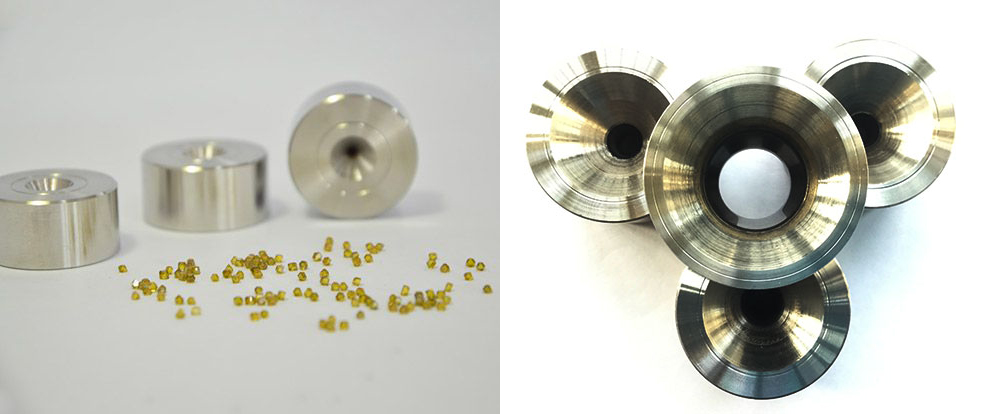
Drawing Dies Tools
The wire drawing die generally refers to various molds for drawing metal wires, and a wire drawing die for pulling an optical fiber. The center of all wire drawing dies has a certain shape of holes, round, square, octagonal or other special shapes. As the metal is pulled through the die hole, the size becomes smaller and even the shape changes. When a soft metal (such as gold and silver) is pulled, the steel mold is sufficient, and the steel mold can have a plurality of holes of different pore sizes.
Drawing die is widely used, such as high-precision wire used in electronic devices, radar, television, instrument and aerospace, as well as commonly used tungsten wire, molybdenum wire, stainless steel wire, wire and cable wire and various alloy wires are drawn by diamond wire drawing die. The diamond wire drawing die is made of natural diamond, synthetic diamond, polycrystalline diamond and CVD diamond as raw materials, so that it has extremely high wear resistance and extremely high service life.
After decades of development, many new drawing die materials have emerged. According to the type of material, the wire drawing die can be divided into alloy steel die, cemented carbide die, natural diamond die, diamond die, polycrystalline diamond die, CVD diamond die and ceramic die. The development of new materials has greatly enriched the application range of the wire drawing die and improved the service life of the wire drawing die.
The structure of the wire drawing core can be divided into five sections according to the nature of the work; the inlet zone, the lubrication zone, the working zone, the sizing zone, and the exit zone. The inner diameter profile of the wire drawing die is important, which determines the tensile force required to compress the wire and affects the residual stress in the wire after drawing. The functions of each zone of the core are: the inlet zone, which facilitates threading and prevents the wire from scratching the wire drawing die from the inlet direction; the lubrication zone, through which the wire is easily brought into the lubricant; the working area, which is the main part of the die hole, the deformation of the wire The process takes place here, reducing the original section to the required section size. When the conical metal is drawn, the volume occupied by the volume of the metal in the working area is a circular table, which is called a deformation zone. The cone half angle & alpha; (also known as the mold hole half angle) in the work area is mainly used to determine the pull force; the sizing area is used to obtain the exact size of the drawn steel wire; the exit area is used to prevent the steel wire exit. Smooth and scratch the surface of the wire.

PRODUCTS:
Copyright © 2018 Henan Baililai Superhard Materials Co., Ltd. All rights reserved. Powered by MetInfo
TOP

 简体中文
简体中文 English
English Pусский
Pусский
.jpg)